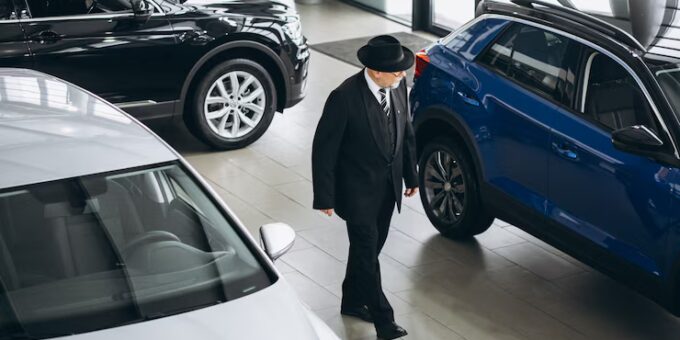
Introduction
Electric vehicles (EVs) are reshaping not just the automotive industry—but the very experience of driving itself. One of the most noticeable, and perhaps underrated, aspects of this transformation is silence. That’s right. Electric cars, by their very nature, offer a whisper-quiet ride that has elevated the luxury car experience to unprecedented heights.
If you’re someone who values serenity as much as performance, you’re in for a treat. Electric luxury vehicles are redefining what “quiet comfort” means on the road. But why exactly are electric cars so quiet? And are they all the same when it comes to suppressing noise? Let’s peel back the hood and find out.
Why Are Electric Vehicles Naturally Quieter Than Combustion Cars?
To understand the quietness of electric cars, we need to look at the mechanical fundamentals. Traditional internal combustion engine (ICE) vehicles rely on hundreds of moving parts. Pistons firing, exhaust systems vibrating, belts rotating—this all adds up to a constant mechanical symphony, and not always the pleasant kind.
By contrast, electric vehicles are driven by motors with very few moving parts. There’s no engine roar, no exhaust growl, and no turbo spool. Instead, what you get is smooth, linear acceleration with little more than a soft hum—barely audible above the sound of tires rolling over asphalt.
But that’s not the whole story. Even though electric cars remove engine noise, they still have to battle other types of sound that might otherwise be masked—such as wind resistance, tire rumble, or road texture vibration. That’s where luxury EV manufacturers go the extra mile.
The Soundproofing Arms Race Among Luxury EVs
In the luxury car segment, brands aren’t just removing engine noise—they’re engineering silence as an art form. From acoustic glass to active noise cancellation (ANC), today’s top-tier electric vehicles are veritable cocoons of calm. Let’s take a look at some standout examples.
-
Lucid Air: Often dubbed the “silent spaceship,” the Lucid Air was designed in a wind tunnel to minimize aerodynamic noise. With triple-sealed doors, laminated acoustic glass, and a focus on cabin isolation, this EV elevates quietness to a new dimension.
-
Tesla Model S Plaid: Tesla didn’t just focus on performance—it reimagined acoustic comfort. Newer builds feature double-paned glass, revised seals, and enhanced noise insulation. While it doesn’t quite match the Lucid in complete cabin hush, it comes very close, especially in Chill mode.
-
BMW i7: BMW’s flagship electric sedan was built from the ground up with silence in mind. It includes acoustic comfort glazing, a near-silent drivetrain, and even optional rear-seat personal theater screens that don’t disturb cabin peace.
-
Mercedes EQS: If German engineering had a voice, it would whisper in the Mercedes EQS. This EV is packed with sound-deadening materials, floating cabin architecture, and air suspension designed to absorb both road noise and vibration.
-
Audi e-tron GT: Don’t let its sporty profile fool you—the e-tron GT is a soft-spoken speedster. Active noise cancellation, sealed wheel wells, and sound-absorbing carpet materials contribute to a surprisingly serene cabin, even under hard acceleration.
Wind Noise, the New Frontier in Silence
Without an engine to overpower road noise, wind becomes the biggest culprit. That’s why automakers now invest heavily in wind tunnel testing. Every crease in the bodywork, shape of the mirror, and curvature of the windshield has been fine-tuned to reduce turbulence.
Take the Lucid Air again as an example—it boasts a drag coefficient of just 0.197, one of the lowest in production car history. Why? Less wind resistance doesn’t just mean better range; it also means less whooshing around your ears at highway speeds.
Cabin Materials and Their Role in Quietness
Premium EVs are outfitted with materials specifically chosen for their sound-absorbing qualities. From recycled acoustic fiber mats to foam-injected panels and insulated dashboards, these cars are less like vehicles and more like luxury recording studios on wheels.
The Rolls-Royce Spectre, their first all-electric model, went to absurd lengths—adding over 100kg of soundproofing to eliminate even the faintest decibel of intrusion. Engineers even discovered that the car was “too quiet” and reintroduced subtle ambient sounds to avoid disorientation.
Active Noise Cancellation: The Final Layer of Peace
Many high-end electric cars now feature active noise cancellation systems. Think of it like noise-canceling headphones—but for your entire vehicle. Microphones inside the cabin detect unwanted sounds and then play opposite-phase sound waves through the speakers to neutralize them.
The Genesis G90 Electric, for example, employs this technology masterfully, keeping cabin noise below 60 dB even at highway speeds. The result? You can hold a conversation at a whisper or enjoy high-fidelity music without interference.
So, Are All Electric Cars Equally Quiet?
Not exactly. While the absence of an engine certainly helps, not all electric cars are built with the same acoustic finesse. Budget-friendly EVs may lack laminated windows or sophisticated insulation. Some might even amplify road noise due to cheaper tires or minimal underbody protection.
That’s why if cabin serenity is important to you, sticking to luxury electric models is the way to go. These cars aren’t just electric—they’re engineered for elegant silence.
Conclusion
There was a time when the roar of an engine symbolized power and prestige. But in today’s electrified age, silence has become the ultimate expression of luxury. A quiet cabin is no longer a bonus feature—it’s the baseline for high-end comfort.
Whether you’re driving through a bustling city or coasting along a country road, a luxury electric car doesn’t just take you to your destination. It transports you in peace, transforming every trip into a calm, meditative experience.
So if you’re shopping for quiet luxury cars on the market, turn your attention to EVs. They’re not just silent—they’re symphonic in their stillness.